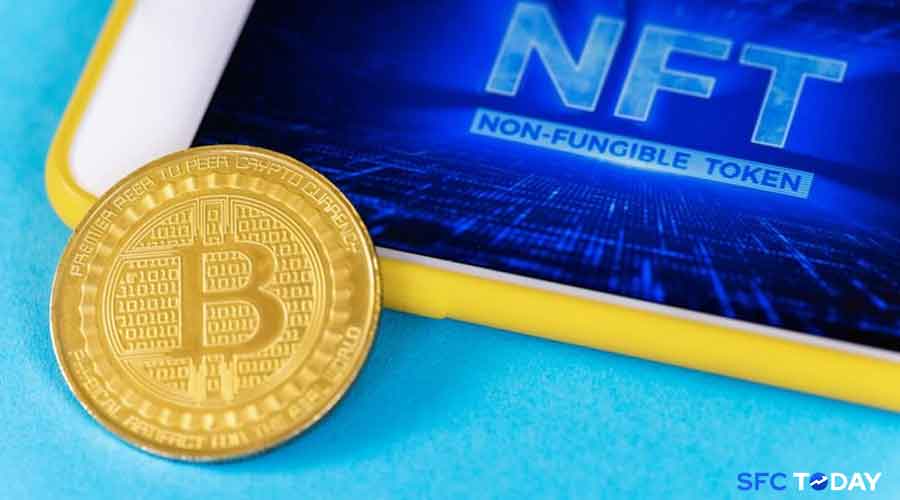From social and gaming features to enhanced discoverability, the NFT future developments reflect a growing emphasis on user engagement and functionality
NFT marketplaces have shown significant growth over the last few years. The growth of NFT marketplaces has led the NFT to incorporate more innovative features.
This enhances user experience and broadens the function of these digital assets. Here explore the key trends and future developments of NFT marketplaces:
1. Integration of Social and Gaming Features
NFT marketplaces are adding social and gaming elements to enhance user experience. The NFT platforms are transforming NFT trading by incorporating features such as chat forums, leaderboards, and gamified experiences.
Users can connect with other collectors, showcase their collections, and participate in interactive activities that provide a sense of community.
This trend not only increases user engagement but also makes the NFT ecosystem more immersive, offering an experience beyond mere ownership.
2. Fractional Ownership and Tokenization
Fractional ownership is another trend that’s gaining traction, allowing high-value NFTs to be divided into smaller, purchasable units.
This approach democratizes access to exclusive NFTs by enabling multiple investors to own shares of an expensive asset.
Also, the tokenization of physical assets such as real estate, artwork, and luxury goods is becoming more common. This merges the physical and digital assets.
3. Sustainability and Environmental Concerns
The environmental impact of blockchain technology, particularly in terms of energy consumption, has been criticized by environmental advocates and the general public.
In response, NFT marketplaces are exploring eco-friendly blockchain solutions, including energy-efficient networks.
These efforts reflect an industry-wide shift toward sustainability, aiming to create an ecosystem that mitigates environmental concerns.
4. Cross-Chain Compatibility
Interoperability is emerging as a critical feature in NFT marketplaces. This allows users to trade and transfer NFTs across different blockchain networks.
By enabling cross-chain compatibility, platforms offer collectors more flexibility, increasing the liquidity and reach of NFTs.
This trend broadens the ecosystem and allows users to use unique features available on various networks, creating a more interconnected NFT space.
5. Enhanced Discoverability and Curation
The volume of NFTs continues to grow, and so does the importance of discoverability and curation. For both collectors and artists, finding specific NFTs can be challenging amidst vast catalogs.
In response, marketplaces are investing in advanced search algorithms and curated collections.
These tools help users to navigate the NFT landscape more efficiently, ensuring that valuable assets gain visibility while making it easier for collectors to locate NFTs of interest.
Improved discoverability not only benefits users but also contributes to a more organized and accessible marketplace.
6. Augmented Reality (AR) and Virtual Reality (VR) Experiences
The integration of AR and VR technologies into NFT marketplaces is transforming the way users interact with digital assets.
These technologies enable collectors to view their NFTs in virtual environments or overlay them onto the physical world, creating a unique and interactive experience.
This trend adds a new dimension to NFT ownership, allowing users to engage with their digital assets in a more immersive way.
7. Integration of DeFi (Decentralized Finance) Features
The convergence of NFTs and decentralized finance (DeFi) is creating new financial opportunities within NFT marketplaces.
The DeFi features such as staking, lending, and yield farming lead the NFT holders to generate passive income and use their NFTs as collateral for loans.
This integration extends the utility of NFTs beyond their inherent artistic or collectible value, allowing owners to maximize the financial potential of their assets.
DeFi not only increases the value proposition for NFT holders but also positions NFTs as multifunctional assets within the broader blockchain ecosystem.
Future Developments of NFT Marketplaces
1. Regulatory and Legal Developments
The expansion of the NFT market has led to regulatory and legal frameworks.
Governments and regulatory bodies are expected to develop guidelines aimed at protecting consumers, preventing fraud, and clarifying tax implications related to NFT transactions.
Clear and comprehensive regulations will provide greater security and transparency for participants in the NFT market, leading to trust and encouraging further growth.
Although navigating regulatory landscapes can be complex, clear guidelines will ultimately benefit the industry by establishing a more stable foundation for future development.
2. Institutional Adoption and Its Impact
Institutional adoption is another factor expected to drive the growth of the NFT market. Institutions such as art galleries, museums, and prominent brands have recognized the value of NFTs.
This will lead the digital assets to gain greater credibility and acceptance. Institutional involvement can lead to significant investments, collaborations with well-known artists, and the creation of curated collections.
This shift will not only accelerate the growth of the NFT market but also reinforce its position within the art and collectibles space.
By attracting institutional support, NFTs are likely to become a more mainstream asset class.
3. The Role of DeFi in Future NFT Marketplaces
DeFi will continue to play an essential role in the evolution of NFT marketplaces. The NFT holders can engage in a variety of financial activities, such as liquidity mining, decentralized exchanges, and decentralized lending.
DeFi offers increased utility and financial flexibility for NFTs, enabling holders to optimize the value of their assets. As DeFi becomes more integrated into NFT marketplaces, users will gain access to a range of financial services that enhance the utility of NFTs.
From social and gaming features to enhanced discoverability, these developments reflect a growing emphasis on user engagement and functionality.
Moreover, sustainability, cross-chain compatibility, and institutional adoption highlight the NFT market’s expansion into new areas. The regulatory frameworks will lead to the continued growth of NFT and the establishment itself in the blockchain space.







